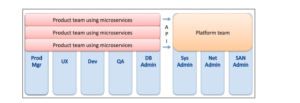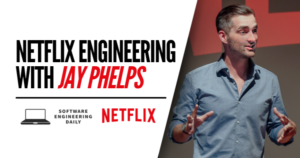IFTTT Architecture with Nicky Leach
Podcast: Play in new window | Download
Subscribe: RSS

It’s 9pm at night, and you are hungry. You order a pizza from Domino’s. You live on a street that’s dark, and so you have installed a smart lightbulb in front of your mailbox that lights up the address. When the pizza at Domino’s is ready, you want the lightbulb on your mailbox to light up so that the delivery person can read your address when they arrive in front of your house with the pizza.
The Internet should make it possible to have this kind of event-driven, connected world. Anything that is connected to the Internet should be able to send signals to anything else on the Internet, so that our lives gradually become more automated.
This is what IFTTT does. Users of IFTTT can easily create applets to wire different services together. You can use IFTTT to trigger an email whenever three of your friends retweet something on Twitter. You can use IFTTT to flash the lights in your house when Bitcoin hits new market highs. You can use IFTTT to order a pizza whenever Bitcoin crashes.
IFTTT makes it easy to connect different services together, and a lot of work goes into the infrastructure that enables these billions of events to process correctly. Nicky Leach from IFTTT’s engineering team joins the show to describe how IFTTT allows for integrations between services that were not built to integrate–and he talks about the scheduling, data engineering, and monitoring of the company’s software stack.
Transcript
Transcript provided by We Edit Podcasts. Software Engineering Daily listeners can go to weeditpodcasts.com/sed to get 20% off the first two months of audio editing and transcription services. Thanks to We Edit Podcasts for partnering with SE Daily. Please click here to view this show’s transcript.



















